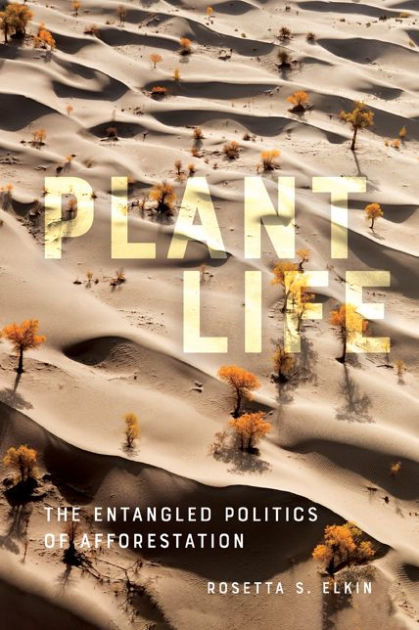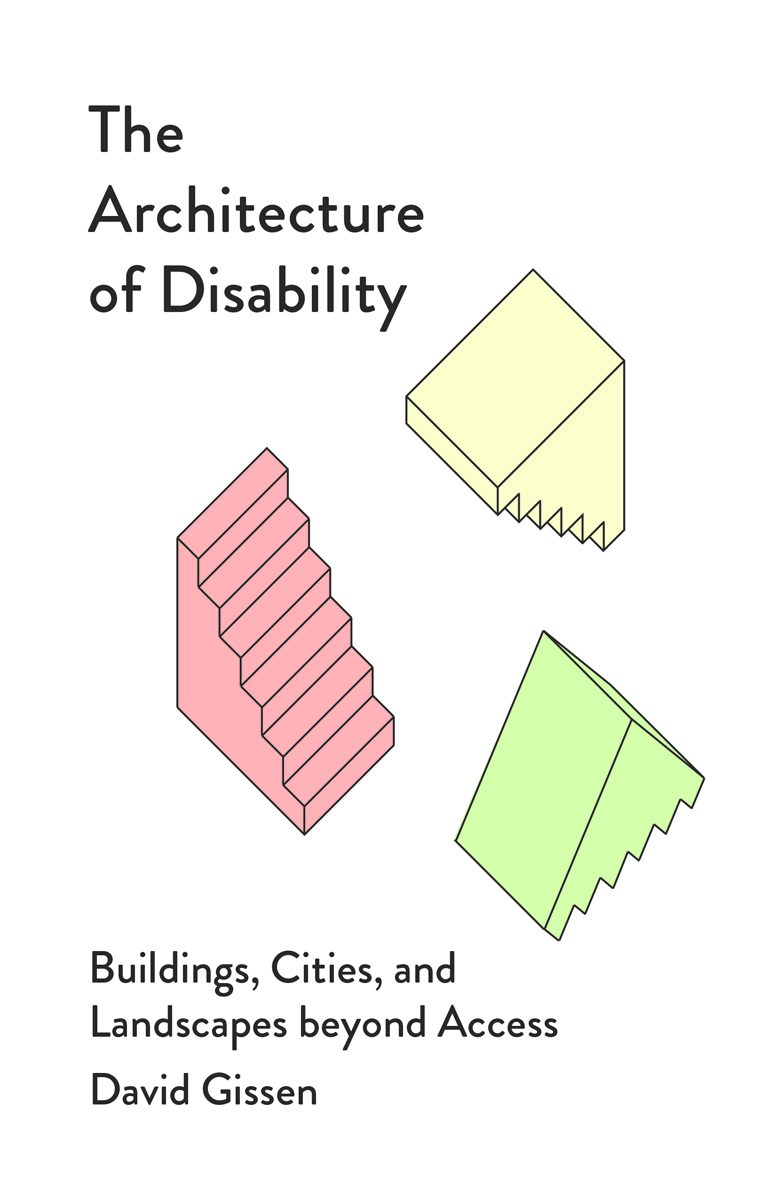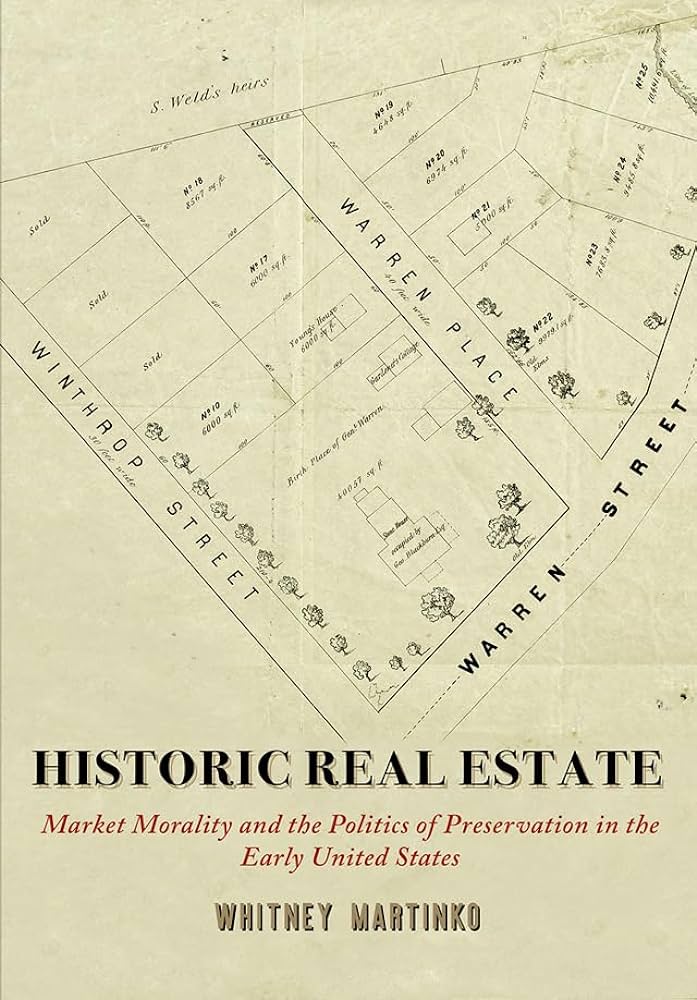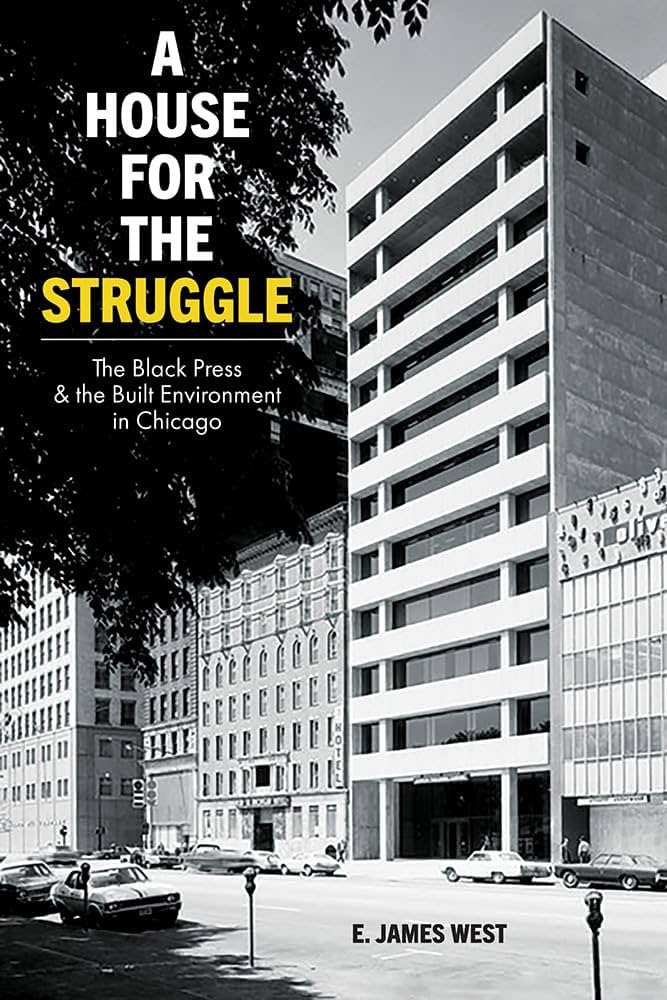On The Brinck
Past Winners
2024
Caroline Tracey, “The Sanctuary Movement”, UNM SA+P Public Lecture, November 3, 2025
On the Brinck | Places Prize Winner
2024
The Shape of Utopia: The Architecture of Radical Reform in Nineteenth Century America, Irene Cheng
The Garden in the Machine, Avigail Sachs
In the Land of the Patriarchs: Design and Contestation in West Bank Settlements, Noam Shoked
2023
Plant Life: The Entangled Politics of Afforestation, Rosetta S. Elkin
The Architecture of Disability: Buildings, Cities, and Landscapes Beyond Access, David Gissen
Historic Real Estate: Market Morality and the Politics of Preservation in the Early United States, Whitney Martinko
A House for the Struggle: The Black Press and the Built Environment in Chicago, E. James West
2022
Building Antebellum: New Orleans Free People of Color and Their Influence, Tara A. Dudley
Landed Internationals: Planning Cultures, the Academy, and the Making of the Modern Middle East, Burak Erdim
Where Dragon Veins Meet: The Kangxi Emperor and His Estate at Rehe, Stephen H. Whiteman
2021
Building Character: The Racial Politics of Modern Architectural Style, Charles L. Davis
Designs for the Pluriverse: Radical Independence, Autonomy, and the Making of Worlds, Arturo Escobar
Spiral to the Stars: Mvskoke Tools of Futurity, Laura Harjo
2024 On the Brinck Book Award + Lecture Winners
The University of New Mexico School of Architecture + Planning (UNM SA+P) is pleased to announce the winners of the 2024 On the Brinck Book Award and Lecture series, created in honor of John Brinckerhoff Jackson. The jury, comprised of Sunil Bald, Felipe Correa, Margaret Crawford, Charles L. Davis III, Catherine Page Harris, Cathy Lang Ho, and Thaïsa Way, honors the following publications:
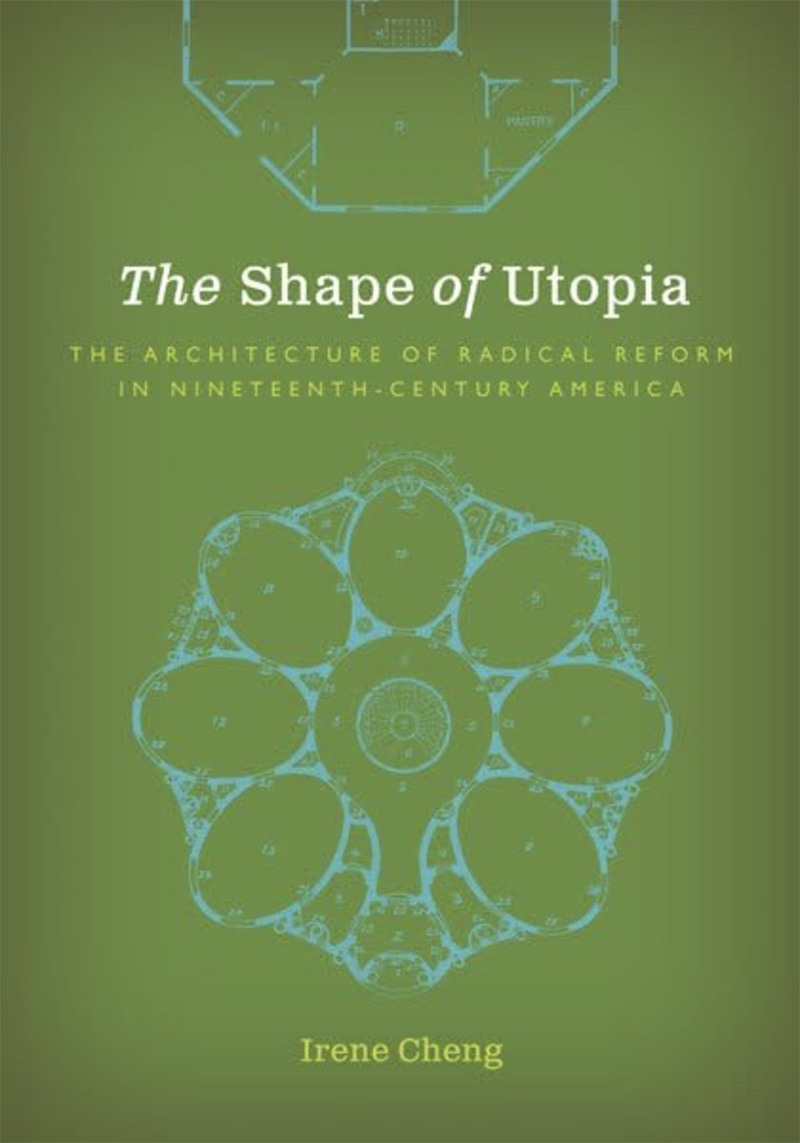

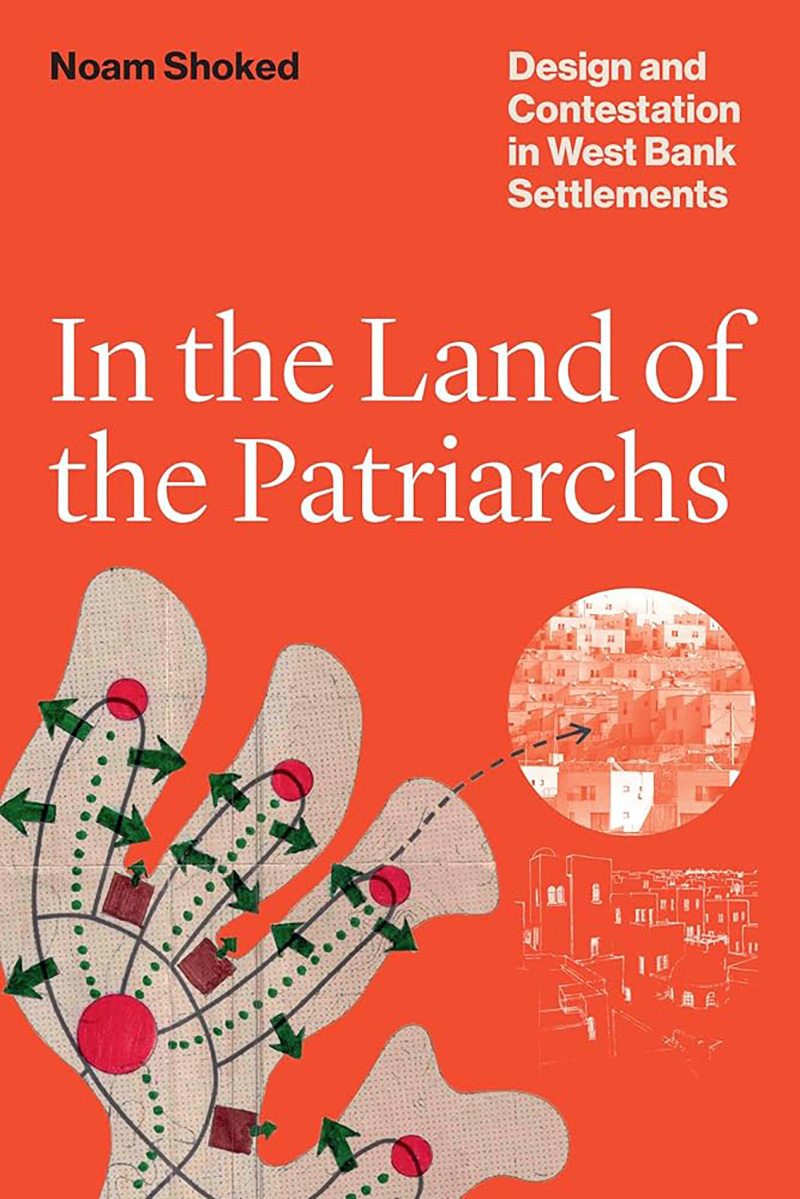
Irene Cheng, The Shape of Utopia: The Architecture of Radical Reform in Nineteenth-Century America, University of Minnesota Press, 2023
Avigail Sachs, The Garden in the Machine, UVA Press, 2023
Noam Shoked, In the Land of the Patriarchs: Design and Contestation in West Bank Settlements, University of Texas Press, 2023
UNM SA+P Dean Robert Alexander González founded the program as a Dean’s Initiative in 2020. He notes, “This award is supported by a generous endowment established by J.B. Jackson toward the end of his life. In his spirit, it affirms our commitment to promoting enlightened approaches to scholarship that emphasize new and overlooked areas of study, accessibility to the reader, and the integration of the allied disciplines we study at the School of Architecture + Planning.”
The awarded volumes embody the legacy of J.B. Jackson, a prolific writer and influential figure in the development of the field of cultural landscape studies, merging analysis of natural, built, and human landscapes. The selected works contribute new knowledge and perspectives spanning the design disciplines of architecture, landscape architecture, planning, and urban design. Together they serve as a collection that can help students, faculty, and practitioners expand design discourse and open new discussions on ways of viewing and knowing.
Coordinating juror and UNM SA+P Associate Professor of Landscape Architecture Catherine Page Harris: “These three new books closely examine the details of place and the built environment to develop crucial conversations on settlement, colonialism, and form in ecological, political, and utopian contexts.”
The School of Architecture + Planning will host the authors for an afternoon symposium on March 24 to present their work and discuss the awarded volumes in the context of J.B. Jackson’s legacy and contemporary issues within architecture and design. We will update our website soon to reflect the time and more details associated with the event.
The following jury comments encapsulate the award program’s thematic connection to J.B. Jackson’s historic contributions:
In the Land of the Patriarchs: Design and Contestation in West Bank Settlements by Noam Shoked
Concrete and expansive, this timely book grounds critical narratives and arguments about Israeli settlements in Palestinian territory in architectural and processual detail. Based on ethnography, interviews, and archival research, the book shows how these places came to be, by revealing paradoxes rather than explicitly taking sides. Emphasizing the often contradictory role of multiple actors, architectural choices, and contingencies, the book lays bare complicity in militarized practices, social histories of radicalized Jewish traditions, and the challenges of ethical boundaries crossed in the profession of architecture. It is a significant contribution for its development of an archive of place and its engagement with the entanglements of colonialism and territorial claims. Researched and written before October 7, 2023, this book offers a grounded articulation of the palimpsests of conflict embedded in the Judean/Palestine peninsula.
The Shape of Utopia: The Architecture of Radical Reform in Nineteenth-Century America by Irene Cheng
Delightful, fascinating, and readable, this book explores utopia and geometry in intentional communities in 19th century America. The careful reading of architectural plans and the explanation of larger social structures through those drawings highlights representation as a communicative act, of both structure and cultures. This incisive reading expands to be a history of settler colonialism and indigenous displacement as well as a reflection on the gaps between plans and ground truths. Cheng views the built environment in a critical manner employing the critical lenses of high architecture on the middle spaces of mass-produced plans and hucksterisms. Smart and accessible writing carries the reader through a fascinating history of intentional communities and the demise of dreams.
The Garden in the Machine by Avigail Sachs
Sachs offers an overview of the Tennessee Valley Authority and the relationship between infrastructure, regional planning, and architecture in shaping a process of nation building. The Garden in the Machine provides a comprehensive narrative of the project that no other publication has achieved previously. The physical analysis of the dams and the housing types and their mobility in both space and culture, creates groundbreaking histories of this monumental control project. Sachs’ work develops detailed narratives about social impacts of the development, including racial disparities and lived experiences of the changes wrought by this infrastructure. The river, land, and power machines, as Sachs delineates, have social goals along with their mechanistic rewiring of the movement of water and production of power. Readable and groundbreaking narratives of place.
2023 On the Brinck Book Award + Lecture Winners
The University of New Mexico School of Architecture + Planning (UNM SA+P) is pleased to announce the winners of the 2023 On the Brinck Book Award and Lecture series, created in honor of John Brinckerhoff Jackson. The jury, comprised of Sunil Bald, Felipe Correa, Margaret Crawford, Charles L. Davis, Catherine Page Harris, Cathy Lang Ho, Thaïsa Way, and Sibel Zandi-Sayek, honors the following publications:
Elkin, Rosetta S. Plant Life: The Entangled Politics of Afforestation. University of Minnesota Press, 2022.
Gissen, David. The Architecture of Disability: Buildings, Cities, and Landscapes beyond Access. University of Minnesota Press, 2022.
Martinko, Whitney. Historic Real Estate: Market Morality and the Politics of Preservation in the Early United States. University of Pennsylvania Press, 2020.
West, E. James. A House for the Struggle: The Black Press and the Built Environment in Chicago. University of Illinois Press, 2022.
UNM SA+P Dean Robert Alexander González founded the program as a Dean’s Initiative in 2020. He notes, “This award is supported by a generous endowment established by J.B. Jackson toward the end of his life. In his spirit, it affirms our commitment to promoting enlightened approaches to scholarship that emphasize new and overlooked areas of study, accessibility to the reader, and the integration of the allied disciplines we study at the School of Architecture + Planning.”
The awarded volumes embody the legacy of J.B. Jackson, a prolific writer and influential figure in the development of the field of cultural landscape studies, merging analysis of natural, built, and human landscapes. The selected works contribute new knowledge and perspectives spanning the design disciplines of architecture, landscape architecture, planning, and urban design. Together they serve as a collection that can help students, faculty, and practitioners expand design discourse and open new discussions on ways of viewing and knowing.
Coordinating juror and UNM SA+P Associate Professor of Landscape Architecture Catherine Page Harris: “These new works enhance conversations around capital, identity, Black presence, and climate change in design. This award honors deft and timely scholarship.”
The School of Architecture + Planning will host the authors for a symposium later this spring to present their work and discuss the awarded volumes in the context of J.B. Jackson’s legacy and contemporary issues within architecture and design. We will update our website soon with dates of the event at saap.unm.edu/news-events/events.html
The following jury comments encapsulate the award program’s thematic connection to J.B. Jackson’s historic contributions:
Plant Life: The Entangled Politics of Afforestation by Rosetta S. Elkin, “Elkin defies the current moment’s obsession with tree planting to challenge what we know about what we are planting. As a landscape architect, Elkin argues that we need to carefully consider how we steward trees and the places where they thrive and in turn, better understand the places where they don’t. Elkin’s critique of tree planting as a cause célèbre to assuage climate change impacts is based in historical and geographically diverse examples. The work reads with a specialist’s eye for horticulture and a storyteller’s narrative arc.”
The Architecture of Disability: Buildings, Cities, and Landscapes beyond Access by David Gissen, “In a multi-referential deconstruction of ableist architectural norms, Gissen’s readings of landscapes, buildings, and histories bring non-linear conceptions of ability into focus. Investigations of ancient historic ramps, landscape spaces of multiple abilities, and conceptualizations of built form challenge contemporary practice and theory to shift away from accommodation to resisting definitions of lack. The book references a rich, complex set of texts and theories in an approachable, readable prose.”
Historic Real Estate: Market Morality and the Politics of Preservation in the Early United States by Whitney Martinko, “Martinko’s evocative study drafts a new origin story for the discipline of historic preservation. Instead of casting ‘preservation’ and ‘new construction’ as polarities of urban development, Historic Real Estate reveals their concomitant function in investing the capitalist market with the perceived morality to preserve the patrimony of the state even as it endorses crude patterns of economic development. This book opens the field of historic preservation to future studies in economics, American studies and architectural history that will be productive for decades.”
A House for the Struggle: The Black Press and the Built Environment in Chicago by E. James West, “A House for the Struggle documents the spatial geographies that were established by the reportage of Chicago’s Black newspaper row. Insisting upon the primacy of space as a concrete medium of change, West’s critique of the Johnson Publishing Building - a beautiful Miesian block that ultimately came to represent the conservatism and decadence of Black capitalism - reveals the relative impotence of formalist approaches to design that are too distanced from the practical realities of Black social uplift. This book provides a useful model for documenting and analyzing the overlooked contributions of Black actors on the built environment.”
2022 On The Brinck Winners
2021 On The Brinck Winners
Public Programs
2022 On the Brinck Book Symposium featuring Tara A. Dudley, Burak Erdim, and Stephen H. Whiteman
2021 On the Brinck Book Conversation featuring Arturo Escobar and Laura Harjo
2021 On the Brinck Book Conversation featuring Charles Davis II and Catherine Seavitt-Nordenson
The Jury

Coordinating Juror
Catherine Page Harris, Interdisciplinary Assistant Professor, teaches Art and Ecology and Landscape Architecture at the University of New Mexico in a split position with the College of Fine Arts and the School of Architecture and Planning. She received her BA from Harvard University, 1988, MLA from UC Berkeley, 1997, and MFA from Stanford University, 2005. Harris works in art/design, and digital/analog expressions. Her built work resides at Marble House Project, Dorset, VT, Deep Springs College, White Mountains, CA, McCovey Field, SF, CA and The Violin Shop in Albuquerque, NM, among other sites.

David Gissen is an author, designer, and educator who works in the fields of architecture, landscape, and urban design. His most recent book, The Architecture of Disability (University of Minnesota Press, 2023) has been praised as “an exhilarating manifesto” and a “complete reshaping about how we view the development and creation of architecture.” David is Professor of Architecture and Director of the Ph.D program at The School of Architecture, Yale University. He lectures and teaches internationally in the areas of architecture, interior, urban, and landscape history, theory, and design, which hae included public lectures at the Museum of Modern Art, Princeton University, Harvard University, and The Center for Architecture, New York. David offers consultation, workshops, and strategic planning for museums, municipal governments and agencies, design firms, and institutions seeking to bring complex disability perspectives into their organization.

Felipe Correa is a professor and the chair of UVA School of Architecture. He is an internationally renowned architect, urbanist, and founder of his design practice Somatic Collaborative. He has served as director of the Master of Architecture in Urban Design program at Harvard University’s Graduate School of Design. He is the author of São Paulo: A Graphic Biography (2018), Beyond the City: Resource Extraction in South America (2016), and Mexico City: Between Geometry and Geography (2015). He is the co-editor of Lateral Exchanges: Architecture, Urban Development, and Transnational Practices, a publication that explores the role of architecture and urbanism in the context of international development.

Margaret Crawford is the Director of Master of Urban Design and Professor of Architecture and Urban Design at UC Berkeley and holds degrees in architectural history, housing, and urban planning. Prior to Berkeley, Crawford chaired the History, Theory, and Humanities Program at SCI-Arc in Los Angeles and, from 2000–2009, was professor of urban design and planning theory at the Harvard GSD, teaching history and design workshops and studios. Her scholarly work includes Building the Workingman’s Paradise: The History of American Company Towns, The Car and the City: The Automobile, the Built Environment and Daily Urban Life, and two editions of Everyday Urbanism, along with numerous articles and book chapters on immigrant spatial practices, shopping malls, public space, and other issues in the American built environment.

Charles L. Davis II is an associate professor of architectural history and criticism at UT Austin’s School of Architecture. He received his PhD in architecture from the University of Pennsylvania and an M.Arch and B.P.S. from the University at Buffalo. His academic research excavates the role of racial identity and race thinking in architectural history and contemporary design culture. He has published articles and essays in Architectural Research Quarterly, Journal of the Society of Architectural Historians, Harvard Design Magazine, Log, Aggregate, Append-x and VIA.

Cathy Lang Ho is an independent architecture writer, editor, and curator based in New York. She consults on diverse projects dealing with architecture, design, landscape, and urbanism. Recent projects include launching and organizing Harvard University GSD’s Wheelwright Prize and Richard Rogers Fellowship, and creating public programs on New York’s Governors Island. She is a contributing editor to Architect magazine and founder and former editor-in-chief of The Architect’s Newspaper (2003–07). She was previously an editor at Architecture magazine (1999-2001, editor-at-large 2001–05) and Design Book Review (1992–99), an award-winning literary journal. Her writing has appeared in publications worldwide, including Domus, Blueprint, and the New York Times. She was the recipient of the Rome Prize (2008–09, Design) and is currently a member of the AAR Society of Fellows Council. In 2012, she was the commissioner and lead curator of the U.S. Pavilion at the Venice Architecture Biennale. She is a former board member of the Institute for Urban Design and has served on numerous awards juries and nominating committees.

Thaïsa Way is the program director in Garden and Landscape Studies at Dumbarton Oaks, Washington, D.C. She holds a professorship of landscape architecture at the University of Washington. An urban landscape historian teaching and researching history, theory, and design, she has published and lectured on feminist histories of landscape architecture and public space in cities. She is the author of Unbounded Practices: Women, Landscape Architecture, and Early Twentieth Century Design (2009), which won the 2012 J. B. Jackson Book Award, and From Modern Space to Urban Ecological Design: The Landscape Architecture of Richard Haag (2015). She has co-edited two volumes, Now Urbanism (2013) and River Cities, City Rivers (2018).

Irene Cheng is an architectural historian, critic, and educator. She is chair of the graduate Architecture program at California College of the Arts (CCA) and co-director of History Theory Experiments (HTX). Her most recent book is The Shape of Utopia: The Architecture of Radical Reform in Nineteenth-Century America (University of Minnesota Press, 2023). The publication explores architectural and urban designs affiliated with anarchist, socialist, abolitionist, free love, spiritualist, and other radical movements. Cheng is a founding principal of Cheng+Snyder, a multidisciplinary design practice that seeks to instigate critical debates about politics, architecture, and the city. Cheng is a recipient of the ACSA Diversity Achievement Award and the AIA San Francisco Community Alliance Education Award. Her work has been supported by fellowships at the McDowell Colony, the McNeil Center at the University of Pennsylvania, and grants from the National Endowment for the Humanities, Graham Foundation, and Whiting Foundation.

